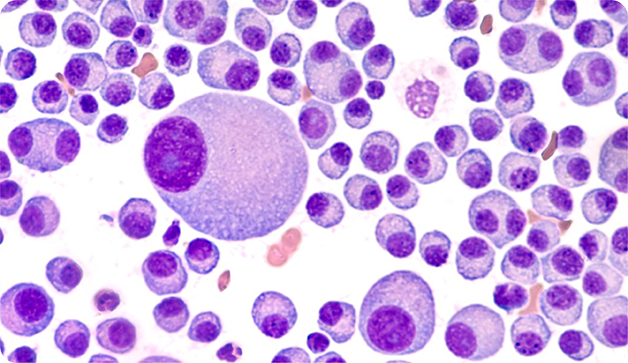Multiple Myeloma
Multiple Myeloma, also called, Kahler’s disease is the development of cancer cells in the plasma. Cancer occurs when the cells start abnormal growth in the bone marrow. These cancerous cells travel throughout the body and develop tumors in the bones.


B lymphocytes or B-cells in the bone marrow produce plasma cells. Plasma cells are responsible for synthesising antibodies to fight against infections. When these cells become cancerous, the immune system of the body is compromised.







